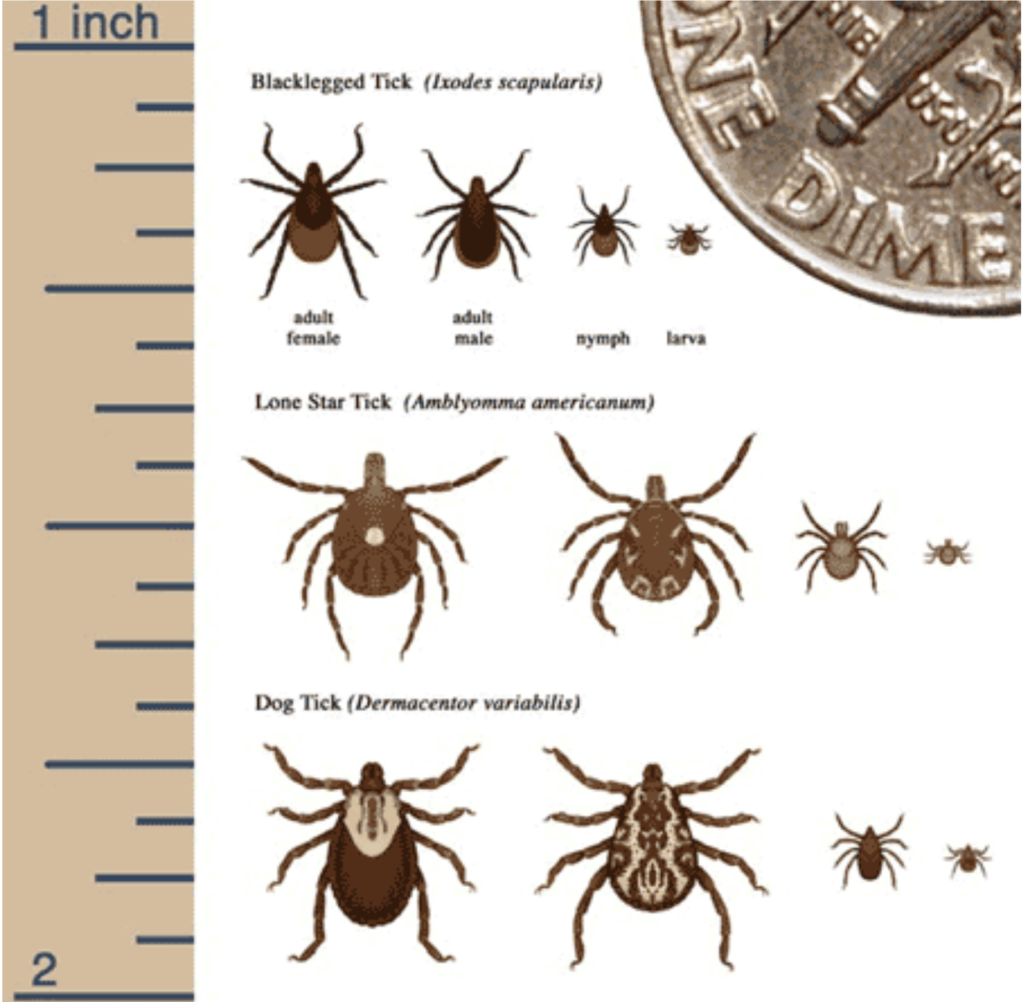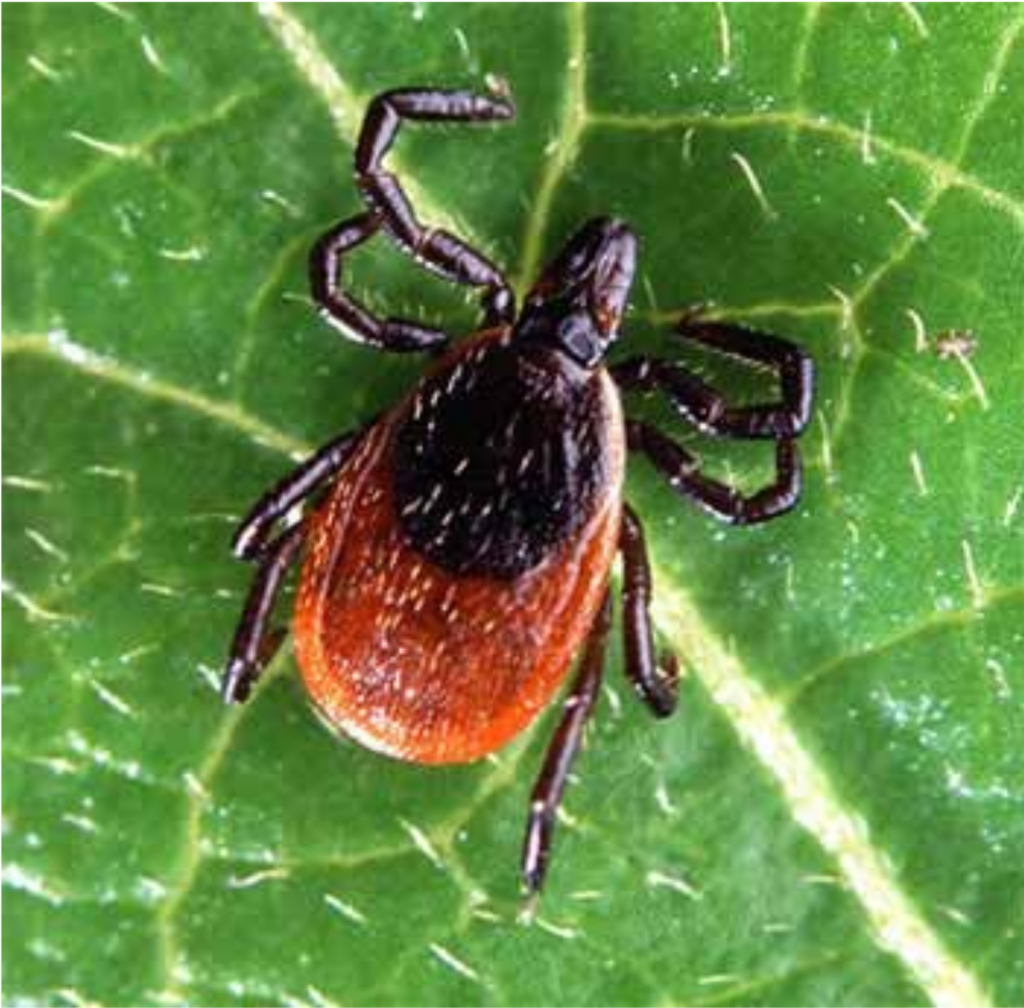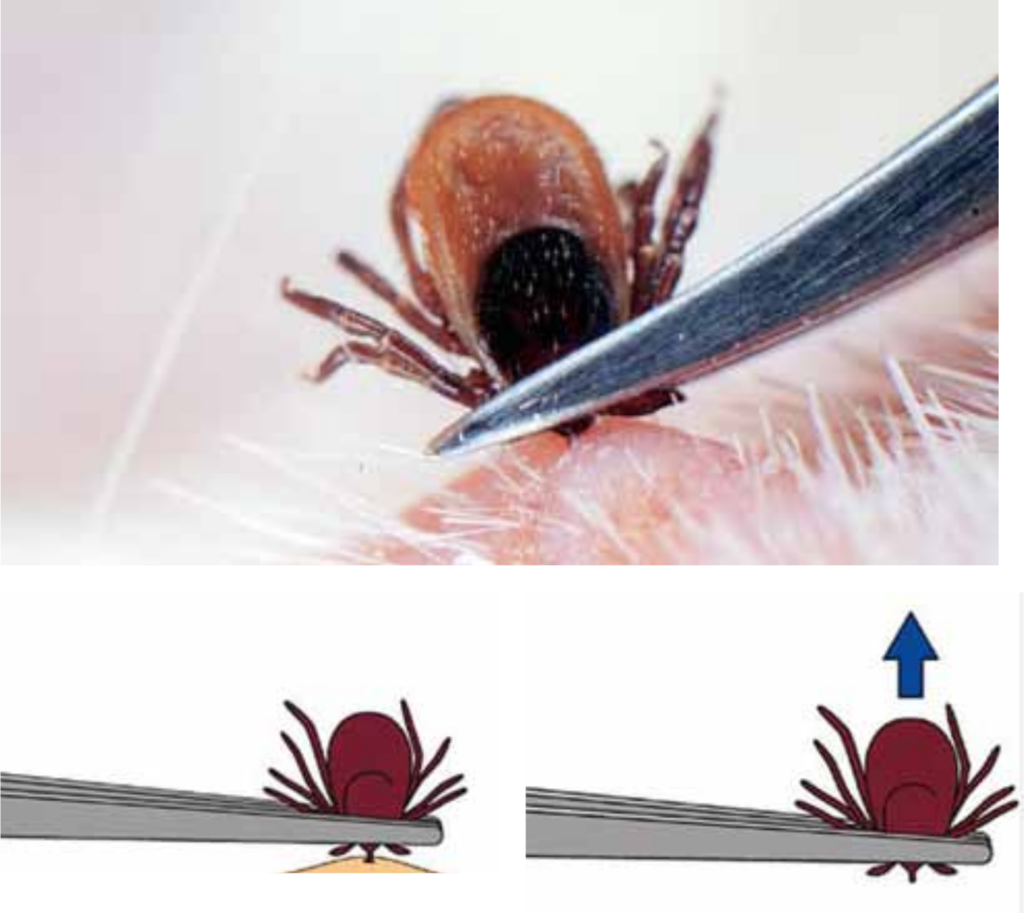The really warm part of reenacting season has arrived. Now is the time to prepare for everyone’s favorite concern in the hobby, ticks. As we head out to enjoy our hobby, the warm spring weather is also bringing out the pests that could hamper our hobby enjoyment.
We know that besides being uncomfortable, ticks also can spread disease, most commonly known diseases are Lyme Disease, Rocky Mountain Spotted Fever, and Southern Tick Associated Rash to name a few. An ounce of prevention can keep you from becoming one of the statistics.
Some species and some life stages of ticks are so small that they can be difficult to see, but all hungrily look for animals and people to bite. Depending on the species, you can find ticks in various environments, often in or near wooded areas. You may come into contact with ticks when walking through infested areas or by brushing up against infested vegetation (such as leaf litter or shrubs). Ticks also feed on mammals and birds, which play a role in maintaining ticks and the pathogens they carry.
Protect Yourself from Tick Bites: Know where to expect ticks. Ticks live in moist and humid environments, particularly in or near wooded or grassy areas. You may come into contact with ticks during outdoor activities around your home or when walking through vegetation such as leaf litter or shrubs. Always walk in the center of trails, in order to avoid ticks.
Use a repellent with DEET (on skin or clothing) or permethrin (on clothing) and wear long sleeves, long pants and socks. Products containing permethrin can be used to treat boots, clothing and camping gear which can remain protective through several washings. Repellents containing 20% or more DEET (N, N-diethyl-m-toluamide) can be applied to the skin, and they can protect up to several hours. Always follow product instructions! Parents should apply this product to their children, avoiding the hands, eyes, and mouth.
Wear light-colored clothing, which allows you to see ticks crawling on your clothing.
Tuck your pant legs into your socks so that ticks can-not crawl up inside of your pant legs. Some ticks can crawl down into shoes and are small enough to crawl through most socks. When traveling in areas with lone star ticks (which are associated with Southern tick-associated rash illness, ehrlichiosis, and possibly Rocky Mountain spotted fever) you should examine your feet and ankles to ensure that ticks are not attached.
Perform Daily Tick Checks
Check your body for ticks after being outdoors, even in your own yard. Conduct a body check upon return from potentially tick-infested areas by searching your entire body for ticks. Use a hand-held or full-length mirror to view all parts of your body and remove any tick you find. Check these parts of your body and your child’s body for ticks:
- Under the arms
- In and around the ears
- Inside belly button
- Back of the knees
- Under the arms
- In and around the hair
- Between the legs
- Around the waist
Check your children for ticks, especially in the hair, when returning from potentially tick-infested areas. See the list above for the places on your child’s body to check for ticks. Remove any tick you find on your child’s body
To Remove Attached Ticks:
- Use fine-tipped tweezers or notched tick extractor, and protect your fingers with a tissue, paper towel, or latex gloves (see figure). Persons should avoid removing ticks with bare hands.
- Grasp the tick as close to the skin surface as possible and pull upward with steady, even pressure. Do not twist or jerk the tick; this may cause the mouthparts to break off and remain in the skin. (If this happens, remove mouthparts with tweezers. Consult your health care provider if illness occurs.)
- After removing the tick, thoroughly disinfect the bite site and wash your hands with soap and water.
- Do not squeeze, crush, or puncture the body of the tick because its fluids may contain infectious organ-isms. Skin accidentally exposed to tick fluids can be disinfected with iodine scrub, rubbing alcohol, or water containing detergents.
- Save the tick for identification in case you become ill. This may help your doctor make an accurate diagnosis. Place the tick in a sealable plastic bag and put it in your freezer. Write the date of the bite on a piece of paper with a pencil and place it in the bag.Folklore Remedies Don’t Work!Folklore remedies, such as the use of petroleum jelly or hot matches, do little to encourage a tick to detach from skin. In fact, they may make matters worse by irritating the tick and stimulating it to release additional saliva or regurgitate gut contents, increasing the chances of transmitting the pathogen. These methods of tick removal should be avoided
(Source: CDC)


